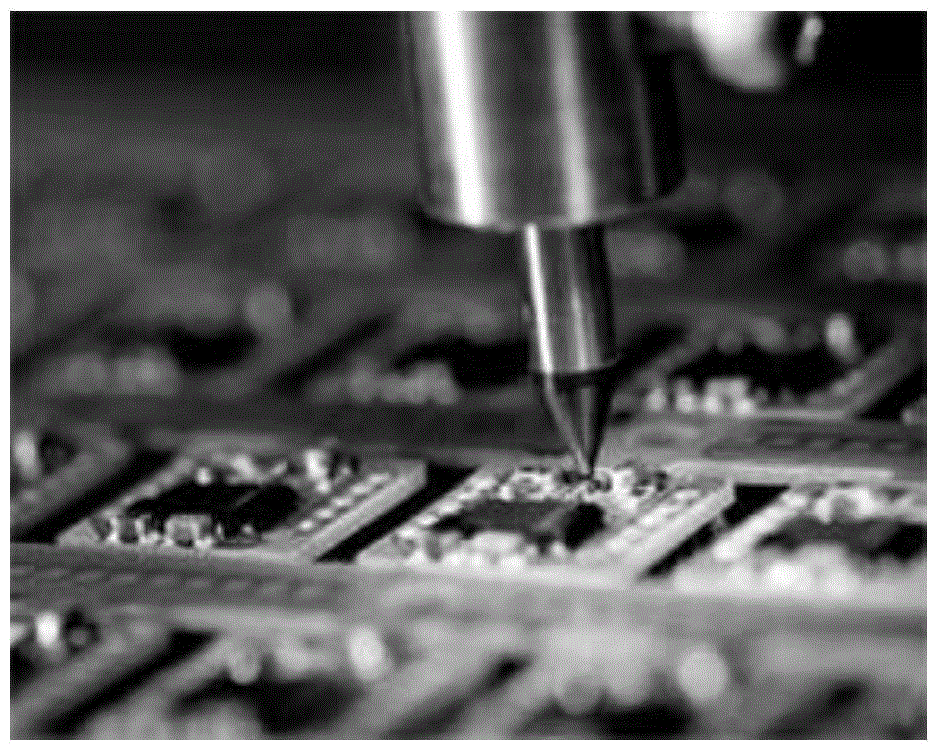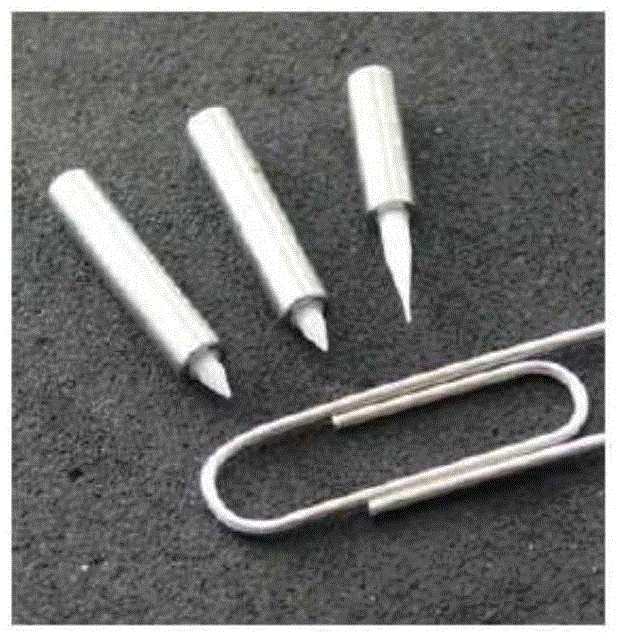Manufacturing Method Of Vacuum Nozzle
A manufacturing method and technology for vacuum suction nozzles, which are applied in the field of vacuum suction nozzle manufacturing, can solve problems such as drill bit wear, poor hole shape, and rising manufacturing costs, and achieve the effects of eliminating processing costs, reducing defects, and solving static electricity phenomena.
- Summary
- Abstract
- Description
- Claims
- Application Information
AI Technical Summary
Problems solved by technology
Method used
Image
Examples
Embodiment 1
[0100] Polyimide powder (Evonik, Austria) with an average particle size of 150 μm was subjected to uniaxial compression at a pressure of 290 MPa for 10 seconds using a compression molding machine (Core-hole Co., Korea) equipped with a core for vent tube formation forming. The thus molded mixture was heated up to 380° C. at a rate of 2.1° C. / minute, maintained for 30 minutes, and then furnace-cooled. The cooled molded product was dipped in a molten mixture of tin and aluminum in a weight ratio of 14:86, and then taken out. Put it into a high-temperature isostatic pressing machine (AIP, the United States), raise the temperature to 300°C at a heating rate of 1.25°C / min, and raise the pressure to 120MPa at a raising rate of 0.4MPa / min with argon gas for 4 hours high temperature isostatic pressing. Next, the molding was mounted on a horizontal lathe and the tin-aluminum coating on the surface was removed by chipping away with a superhard tool, and a tapered tip was formed at one ...
Embodiment 2
[0102] Dry ball milling was performed after adding 1 g of alumina (Sumitmo, Japan) to 100 g of polyimide (Evonik, Austria). The average particle diameter of the polyimide was 150 μm, and the average particle diameter of the added alumina was 0.4 μm. Alumina balls were used for the dry ball milling, and ball milling was performed at 90 to 100 rpm for 24 hours to manufacture a polyimide mixture. Next, the mixture was subjected to uniaxial compression molding at a pressure of 290 MPa for 10 seconds using a pressure molding machine (Core-hole Co., Korea) equipped with a vent tube forming core. The thus molded mixture was heated up to 380° C. at a rate of 2.1° C. / minute, maintained for 30 minutes, and then furnace-cooled. The cooled molded product was dipped in a molten mixture of tin and aluminum in a weight ratio of 14:86, and then taken out. Put it into a high-temperature isostatic pressing machine (AIP, the United States), raise the temperature to 300°C at a heating rate of 1...
Embodiment 3
[0104] It manufactured by the same method as Example 2 except having added 1 g of zirconium dioxide (TOSOH, Japan). The average particle diameter of the zirconium dioxide added was 0.3 μm.
PUM
| Property | Measurement | Unit |
|---|---|---|
| particle size | aaaaa | aaaaa |
Abstract
Description
Claims
Application Information
 Login to View More
Login to View More - R&D
- Intellectual Property
- Life Sciences
- Materials
- Tech Scout
- Unparalleled Data Quality
- Higher Quality Content
- 60% Fewer Hallucinations
Browse by: Latest US Patents, China's latest patents, Technical Efficacy Thesaurus, Application Domain, Technology Topic, Popular Technical Reports.
© 2025 PatSnap. All rights reserved.Legal|Privacy policy|Modern Slavery Act Transparency Statement|Sitemap|About US| Contact US: help@patsnap.com



